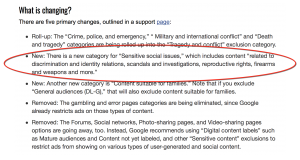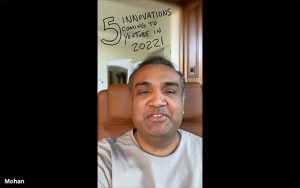Social media and mobile marketing are grabbing everyone’s attention when it comes to marketing today, but what does that mean for more traditional methods like email? It seems weird to even refer to email as “traditional marketing,” but with how quickly technology is advancing it only seems fitting. As you would probably expect, the most effective marketing utilizes multiple mediums to create brand awareness and put your brand in a consumer’s consideration set.
It’s easy to discount the impact that email marketing has simply because it’s been around for so long, but statistics say that 9 out of 10 Americans use email every day, whether it’s on a mobile device or computer. There are few mediums that can provide such a large audience on a consistent basis, so maybe this email thing isn’t so crazy after all.
Email Is Here to Stay
According to a study by McKinsey, email marketing is nearly 40 times more effective at acquiring customers than all social media sites combined, and customers attracted by email are 12% more valuable than the average customer. Email is often one of the first steps in the buyer’s journey, providing brand awareness and drawing people to a company’s website or social media.
Tips for Crafting Effective Emails
When creating emails, include links to specific landing pages and blogs that can further engage the prospect or customer. Provide a special offer or original content, anything that will help you gain more insight into what the individual is potentially interested in.
In addition to customized landing pages, allow recipients to opt-in to receiving email communications so that you aren’t bothering people with emails they don’t want to read. This creates a list of qualified prospects, which increases the likelihood of conversions.
Once you have email lists ready to go, tailor your campaigns to specific objectives and target markets to maximize open rates and clickthroughs. Sending personalized messages shows that you’re paying attention to what content a consumer is interacting with, and this makes them much more likely to take the time to read your message.
In the mobile-centric world we live in, we expect every website and email to be optimized for mobile devices. About 45% of emails are opened from a mobile device, so make your email is functional and every webpage and link included is mobile-friendly. From our own experiences, we know how frustrating it is to come across a webpage that doesn’t load or isn’t readable without zooming, so keep that in mind when composing emails.
How to Make Email Work for You
Even though email marketing does require a bit of a time commitment, it’s something that a company of any size can incorporate into their marketing strategy. It’s cost-effective and it works. Email is a medium that allows you to share a lot of information directly, generate interest, drive traffic, and track all of this in the process.
Tracking open rates, clicks, and landing page conversions is critical to maximizing the effectiveness of email marketing. You can better segment leads by how engaged they are with your content and customize future communications.
When it comes to email marketing, it’s important to send messages on a consistent basis without overwhelming consumers. Is there a magic number of emails to send per week? Unfortunately, no; it really depends on your target market, the complexity of the products or services you sell, and if you have a meaningful message to convey at that time. If you don’t have anything important to say, you’re better off waiting to send an email until you have an enticing offer or piece of content to share.
Tips for More Effective Emails
- Keep subject lines under 10 words if possible
- Use enticing subject lines to get your email opened, but don’t always display an offer there
- Keep emails concise with links to additional information
- Include social media buttons at the bottom of emails to direct traffic to your profiles, connect platforms together, and increase your following. Maximize the number of engagements you have with a prospect or customer.
- Balance sales and content emails so consumers don’t feel like they are always being sold. Newsletters are a great way to keep your emails fresh and not focus so much on making a sale.
- A/B test campaigns to see what designs and wording works best. This may differ depending on the audience and purpose of the email.
Manage All of Your Marketing Channels
With any marketing channel, it’s important to make sure that it fits into your overall marketing strategy. There are so many ways to reach consumers that it’s easy to neglect one strategy while focusing on building up another.
It can seem like a lot to oversee email marketing, social media, traditional media, and advertising initiatives, and it is. What makes a marketing strategy effective is a company’s ability to figure out what each medium contributes to the overall plan and connect the pieces together.
Being able to split your time between channels and not overly favor one over the others takes time, especially if you’re just getting started. Social media is stealing a lot of the limelight right now, and it’s extremely important to be active on social media, but don’t forget about everything else in the process.
Email marketing might seem “old school,” but year after year its effectiveness has been proven. It can do a little bit of everything when it comes to your marketing strategy, helping consumers move through the buyer’s journey towards what you offer. And if everyone is doing it, don’t you think it might be for a good reason?
(372)
Report Post






